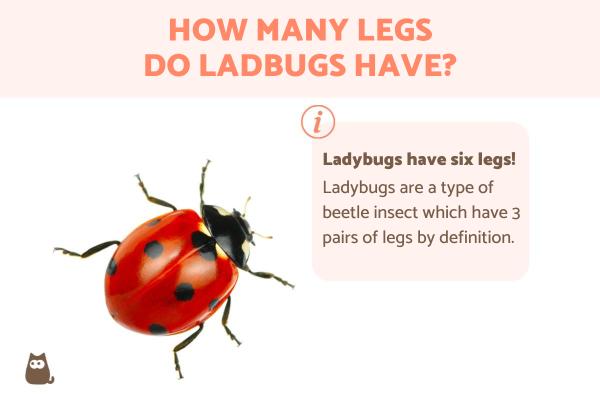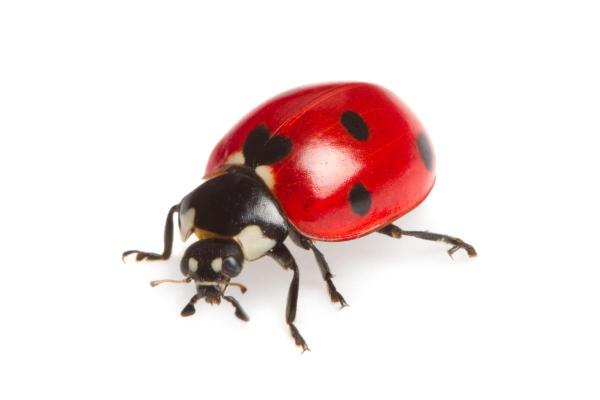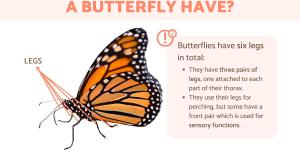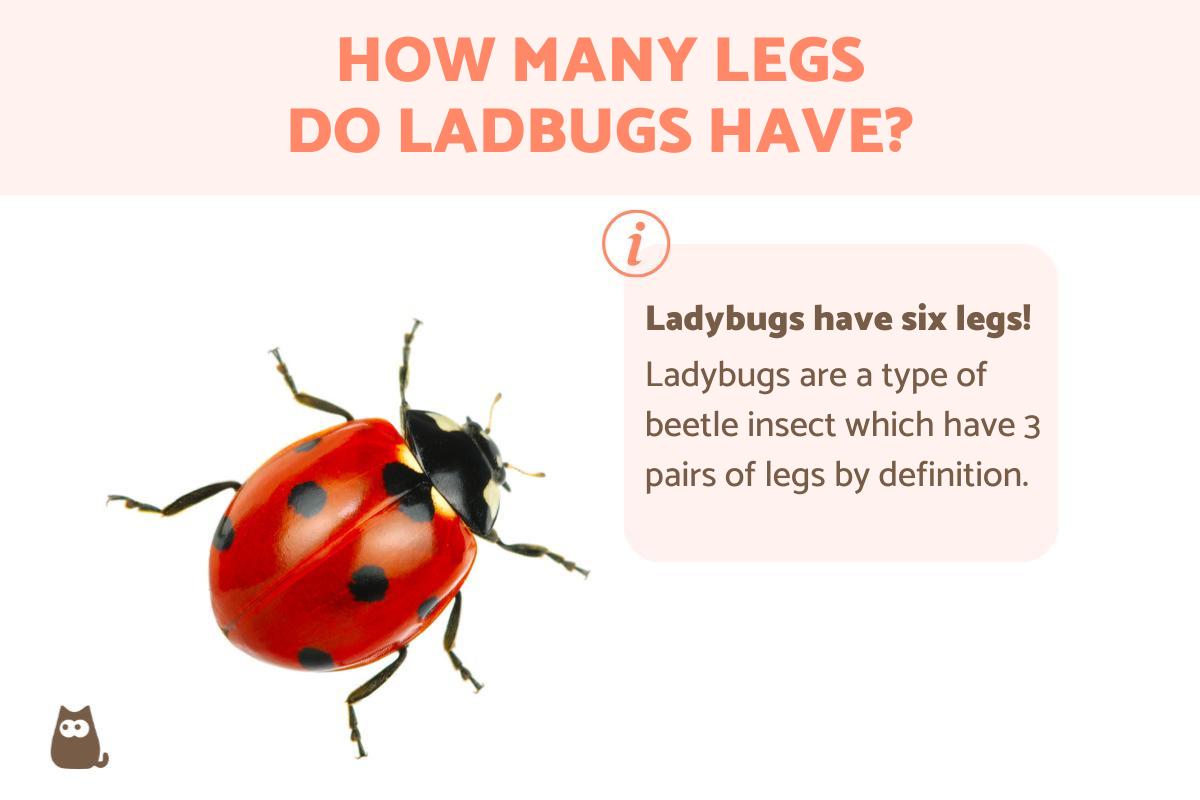How Many Legs Do Ladybugs Have?


The family Coccinellidae is made up of insects known as ladybugs, ladybirds or lady beetles. Which term you use generally depends on your location, with ladybug being the preference in North America. The reason for so many names is due to an incredible species diversity and population range. They are found on every continent with the exception of inhospitable Antarctica. A type of beetle, one of their main characteristics is a striking coloration and pattern on their elytra forewings. These patterns often influence their common names. Despite such diversity, some characteristics remain the same for all, leading AnimalWised to ask how many legs do ladybugs have?
As with all insects, ladybugs have six legs in total. This can be confusing for some since they have a unique appearance, leading some to think of them as being different from other insects. We look at ladybug leg anatomy to explain this in more detail.
How many legs does a ladybug have?
Ladybugs rarely exceed 10 mm in size, with females usually slightly larger than males. Their bodies are mostly oval, with a domed back and a flattened underside. Their compound eyes are large and their antennae are club-shaped, with up to 11 segments. They also have a powerful mandible which is very useful for preying on other insects.
Appendages such as antennae and mandibles can make it appear as if insects have more than six legs. However, it is important to distinguish between locomotive structures such as legs and other anatomical structures. In this case antennae and mandibles are used for sensory and dietary purposes, respectively.
Ladybugs are a type of insect known as beetles. All beetles have types of hardened forewings known as elytra. They cover the more fragile hindwings which are used for flight. These elytra in ladybugs usually have some combination of black with red, yellow or orange. They can create very distinctive spotted patterns which help us to recognize each of the over 6000 individual species in the family Coccinellidae.
Generally speaking, the legs of beetles are made of several jointed parts. These are typical of all arthropods and ladybugs are no exception. As with all insects, ladybugs have six legs by definition.
Learn more about ladybug anatomy with our article asking are ladybugs toxic to humans?
Ladybug leg anatomy parts
Ladybugs have specialized legs that allow them to move nimbly across various surfaces. These small beetles have three pairs of legs, a defining characteristic of all insects. Their legs are primarily designed for walking and gripping various types of surfaces. This allows them to move easily across leaves, stems and flowers, foliage which makes up the habitats where they spend most of their time.
Each ladybug leg is made up of several articulated sections, giving them flexibility and precision in their movements. From their insertion into the body to their extremities, the parts that make up a ladybug's legs are:
- Coxa
- Trochanter
- Femur
- Patella
- Tibia
- Metatarsus
- Tarsus
- Nails
The tarsal structure of ladybugs follows the 4-4-4 formula, although it may appear to be 3-3-3 at first glance. This is because the third segment of the tarsus is very small and not easily visible. At the distal part (tip) of each tarsus are two claws. These allow them to firmly grip various surfaces. The claws can vary depending on the species, being simple, forked or with a quadrangular tooth at the base. This is useful for scientists in their taxonomic classification of these insects.
Some ladybug species have modifications to their tibiae and tarsi which may show lateral projections or enlargements. These variations not only contribute to their identification in scientific terms, but may also perform specific functions in locomotion or defense. Ladybugs can completely retract their legs into cavities beneath their bodies when at rest, helping to protect them from predators.
Discover more about the survival of ladybugs with our article asking how long do ladybugs live?

What are ladybug legs like?
The ladybug's legs are relatively short compared to its body, but they highly functional and well adapted to their needs. Ladybug leg anatomy allows them to move quickly and hold firm to various surfaces. They can even walk upside down on surfaces such as the underside of leaves. As they are divided into multiple segments, ladybug legs are highly mobile. This makes it easier for them to explore their environment in search of food or shelter.
While the elytra of ladybugs vary in color, this is not the case with their legs. All ladybug legs are black, although it is possible some species may have lighter or darker colorations than others.
A defense mechanism against predators
A distinctive feature of ladybugs is their ability to secrete a malodorous substance through their leg joints when they feel threatened. This defense mechanism gives them an unpleasant taste to predators which helps to avoid being eaten in the first place. This substance is mildly toxic thanks to chemicals such as alkaloids and other compounds found in their hemolymph. It does not make ladybugs poisonous, but it does help avoid predation.
Another way ladybugs avoid predation is via their use of aposematism in animals. This uses their coloration and patterns to warn of potential predators that they are not tasty to eat.
Ladybug legs are attached to the three thoracic segments of their bodies and are divided into three pairs:
- Prothoracic
- Mesothoracic
- Metathoracic
Their primary function is to allow them to walk and hold on to surfaces, although they can also be used as a defensive tool by secreting their repellent fluid. The combination of short legs, claw-tipped limbs and great mobility makes ladybugs highly efficient insects for moving around and surviving in their environment.
Discover more about ladybug behaviors with our article asking what do ladybugs eat?
If you want to read similar articles to How Many Legs Do Ladybugs Have?, we recommend you visit our Facts about the animal kingdom category.
- Animal Diversity Web (2020). Available at: https://animaldiversity.org/
- González, G. (s/f). Coccinellidae. Available at: https://www.coccinellidae.cl/paginasWebChile/PDFs/BAA%20vol%203%20COL%20COCCINELLIDAE.pdf






